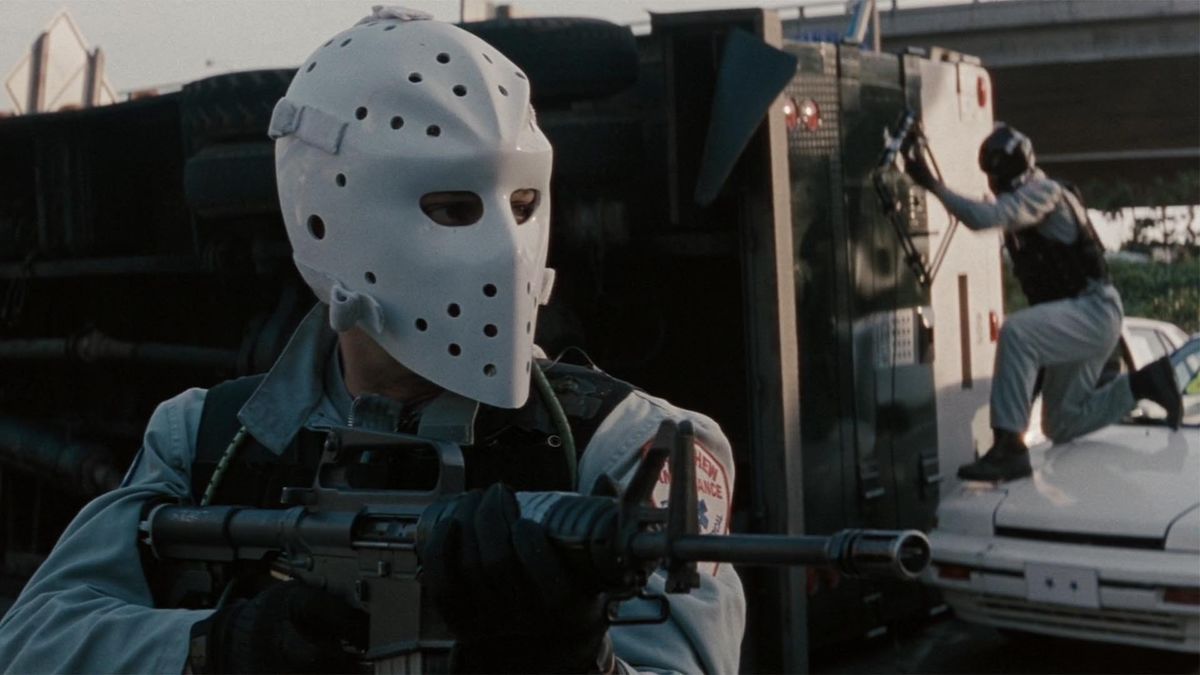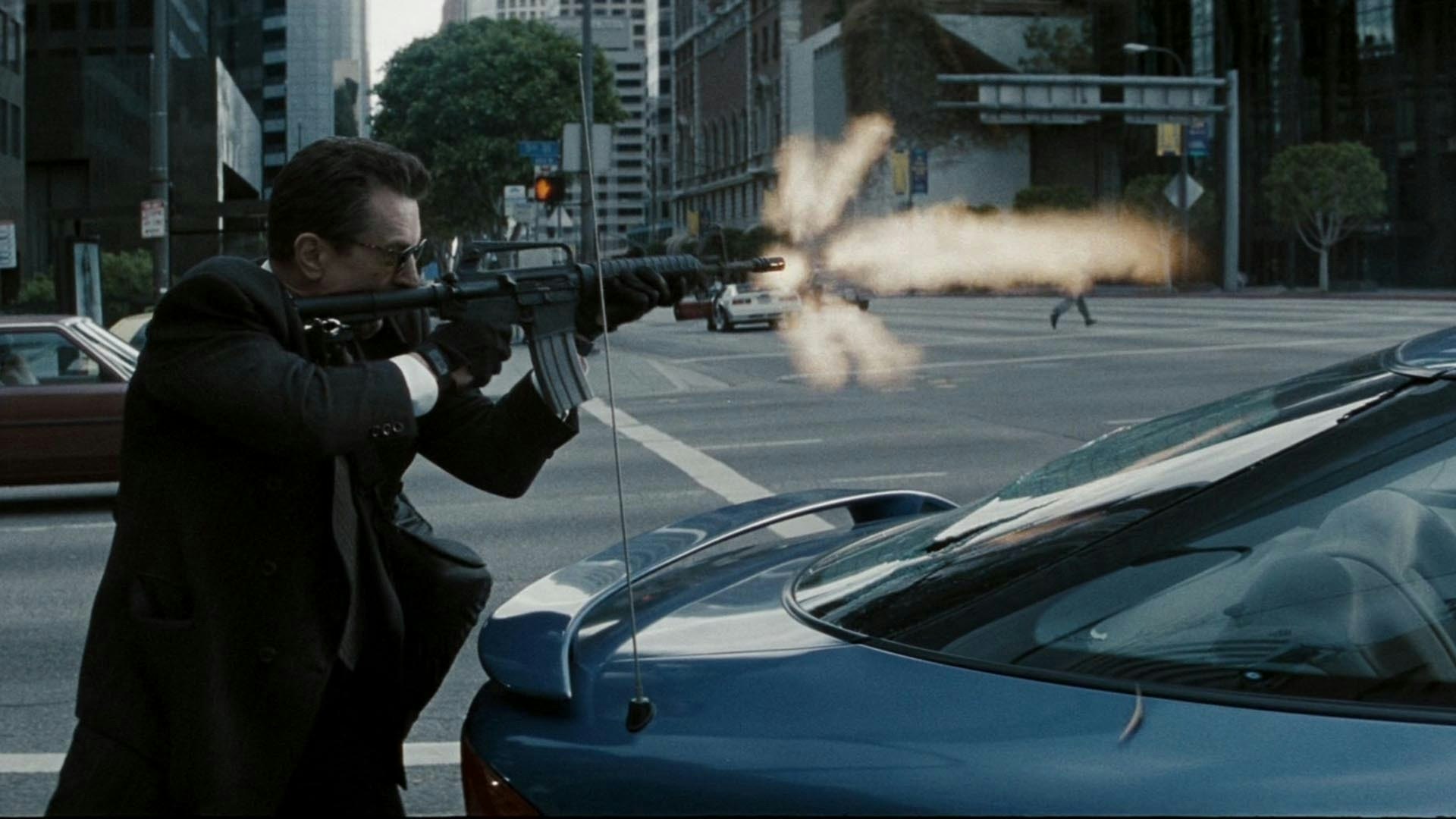Heat (1995)
Directed by Michael Mann, Heat is a gripping crime epic that explores the intersecting lives of professional criminals and the detectives who pursue them. The film stars Al Pacino as Lt. Vincent Hanna, a relentless LAPD robbery-homicide detective, and Robert De Niro as Neil McCauley, a disciplined, highly intelligent career thief who leads a crew of elite criminals in Los Angeles.

The story begins with a meticulously planned armored truck heist executed by McCauley’s crew—Chris Shiherlis (Val Kilmer), Michael Cheritto (Tom Sizemore), and new recruit Waingro. The heist goes awry when Waingro impulsively kills a guard, forcing McCauley to eliminate the remaining witnesses. The murders attract the attention of Hanna, who becomes obsessed with tracking down the crew.

As McCauley plans one final score—a massive bank robbery—he starts to form a relationship with Eady, a quiet graphic designer, which challenges his rigid “no attachments” philosophy. Meanwhile, Hanna’s obsessive work ethic strains his marriage, highlighting a parallel between hunter and hunted: both men are brilliant, isolated, and consumed by their work.

Tensions rise as Hanna closes in, and McCauley grows wary of being followed. In one of the film’s most iconic scenes, the two men meet face-to-face in a coffee shop. Their conversation reveals a mutual respect and acknowledgment that only one of them will walk away if their paths collide again.

The bank robbery, a stunning and chaotic downtown shootout, is a turning point. It ends in bloodshed and the beginning of the end for McCauley’s crew. As the net tightens, McCauley is forced to choose between escape with Eady and settling a final score with the traitorous Waingro.
In the film’s climax at LAX, McCauley kills Waingro but is spotted and chased by Hanna. In a tense, silent standoff near the airport runways, Hanna fatally shoots McCauley. As McCauley dies, Hanna takes his hand—a quiet acknowledgment of their strange kinship.
Heat is a masterclass in character-driven storytelling, combining action with psychological depth. It explores themes of loneliness, professional code, and the thin line separating cops from criminals.



